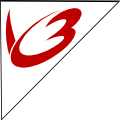Committee B Minutes / Conf Call 2 / 16 Feb 2006
by
kajarno
—
last modified
2006-02-28 11:15
Minutes from the second Conf Call of Committee B , Thu 16 Feb 2006
GPLv3 Committee B: Meeting Notes 16 Feb 2006
The meeting focused on three key sections of GPLv3:
a) Section 1 and the issues of what constitutes Complete Corresponding Source Code (lines 92-117) and the special exception (lines 119-129);
b) Section 3 and the issue of Digital Restrictions Management (lines 153-166); and
c) Section 11 and the issue of licensing of patents including downstream protection (lines 391-404).
The discussions were led by Eben Moglen.
a) Complete Corresponding Source Code (Lines 92-117)
- Intent is to avoid restrictions on modification/compiling and installing modified code.
- The TIVO situation, where hardware prevents a user from installing a modified version of the open source code without an authorization code, is prime example of concern.
- Mere package signing for purposes of certifying the provider of the code is not at issue because it is not "needed" to modify or compile the code.
- Also not at issue are situations where all users within an organisation are subject to restrictions on modification so long as one user within that organisation has the unfettered right to modify and authenticate the code.
- Issue was raised regarding Line 11 "or unseal the work's output." Eben stated, as an example, that this was to prevent situations where a proprietary enhancement is combined with GCC that would make a key necessary to use the compiled code. It is also intended to address automatic DRM without a users consent.
Special Exception (Lines 119-129)
- Goal is to conform GPL3's language to GPL2 intent: the previous "system library" exception was over- and under-inclusive
- Which source code?
- Not source code from OS on which application is intended to run
- Not intended to exclude GPL software that is linked with non-GPL free software C libraries or other system libraries, such as in the mixture of GNU/OpenSolaris
- A rewrite of the system library exception
- If a system library is modified to include patent-encumbered elements of an API, the library no longer qualifies for exception to the requirement to distribute source code.
- Not intended to require patent searching, but is intended to cover third-party patents
- Part (a) could include an entire compiler or interpreter if (b) is also true
- Question raised about Line 128 -
- Eben - would prohibit the distribution of a GPL-licensed JAVA application when the source code to an accompanying JVM that alone can execute the Java variant involved is not available.
b) DRM (Lines 153-166)
- The purpose of this section is to provide a mindset for the entire license.
- The text "no permission . . . users privacy" (lines 157-158) likely to come out.
- Eben agreed the word "legal" may be a worthwhile addition before the word "freedom" in the first sentence.
- Eben indicated consideration could be given to modifying the words "copyrighted work" in the first sentence to read either "covered work" or "work based on the program."
Eben acknowledged it is possible for a copyright owner to release code under GPL 3.0 with a "permission" allowing users to, e.g., play DRM-protected content using that copyright owner's GPL 3.0-licensed code. That is because Section 7 allows the author to add additional permissions, and allowing the user to keep access or encryption codes secret (or to run code or content containing a secret access or encryption code) would be considered an allowed additional "permission," not a disallowed additional "restriction." All the other provisions of Section 7 would also apply in that scenario.
- However, FSF wishes to make clear that it regards the spread of user-disabling DRM designed to protect certain entertainment distribution business models as a disaster for all parties, developers, users, and consumer electronics manufacturers. Allowing third parties to dictate for purposes of private enrichment how equipment used in peoples' homes will be designed, manufactured and used would be as serious a mistake as ignoring the problem of the patented anticommons was at the time GPLv2 was introduced.
- VIGOROUS DEBATE!
c) Licensing of Patents (Lines 391-404)
Scope of grant - only intended to include those claims read on by the code as distributed by the licensor, not new claims that may be read on by modified code. However, the licensed claims go with that code even if that code is reused in another application, i.e., no field of use restriction.
Lines 399-400 - "or any reasonably contemplated use" seems to expand license
May only be a drafting problem
FSF not looking to extend coverage to new claims
Not seeking coverage for anything beyond claims practiced by the work as originally distributed
Does not go beyond make, use, or sell, but it does include those aspects
Lines 402-404 - "must act to shield downstream users"
intended to provide flexibility in reaching accommodations other than a patent license that extends to all downstream users, e.g., warranties/indemnification, inventing around, reexamination, possibly market-informing disclosure, etc.
